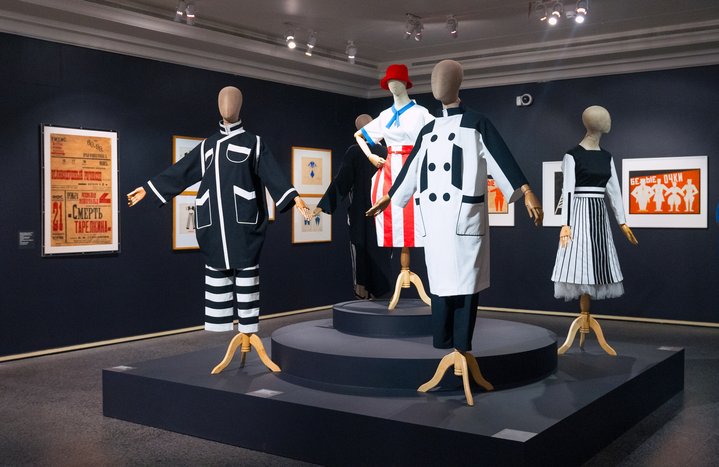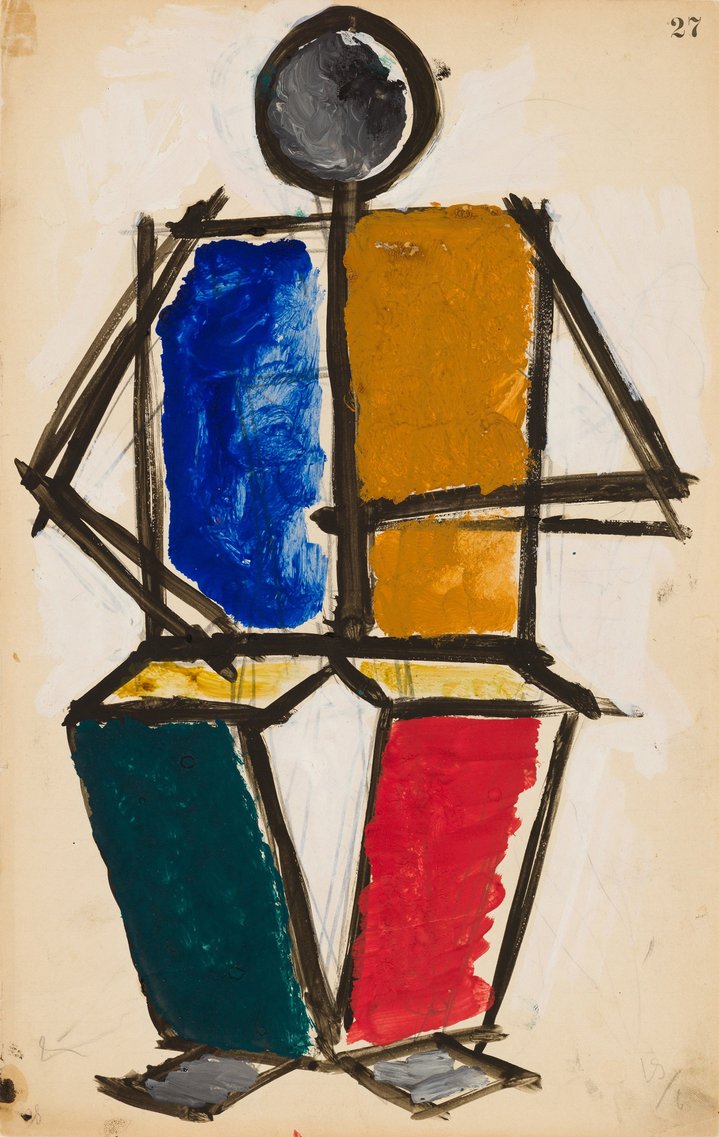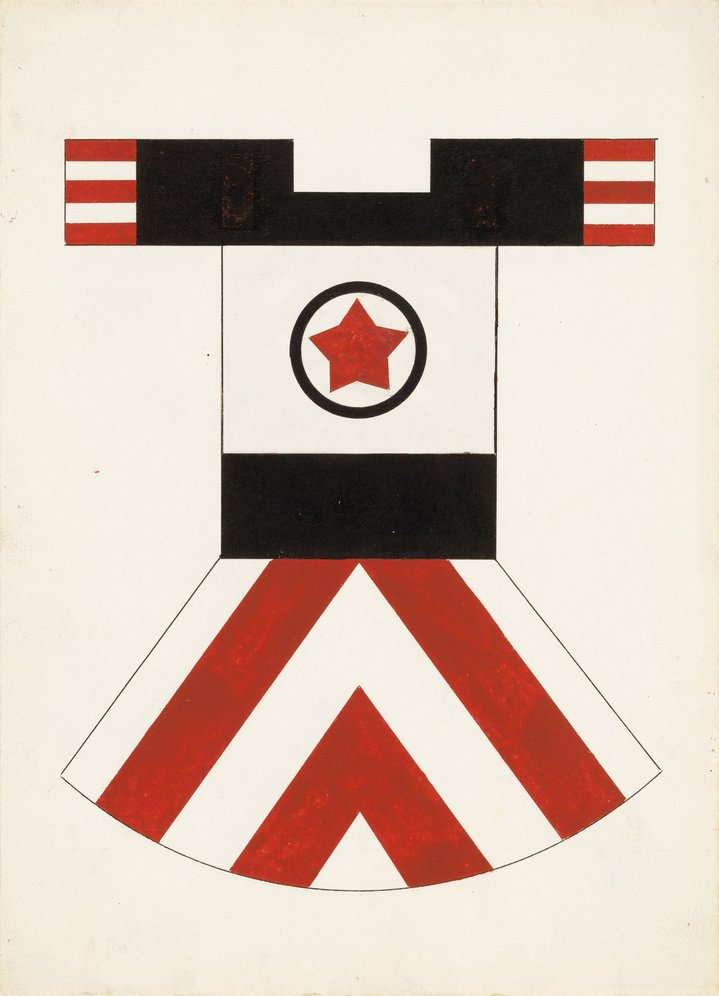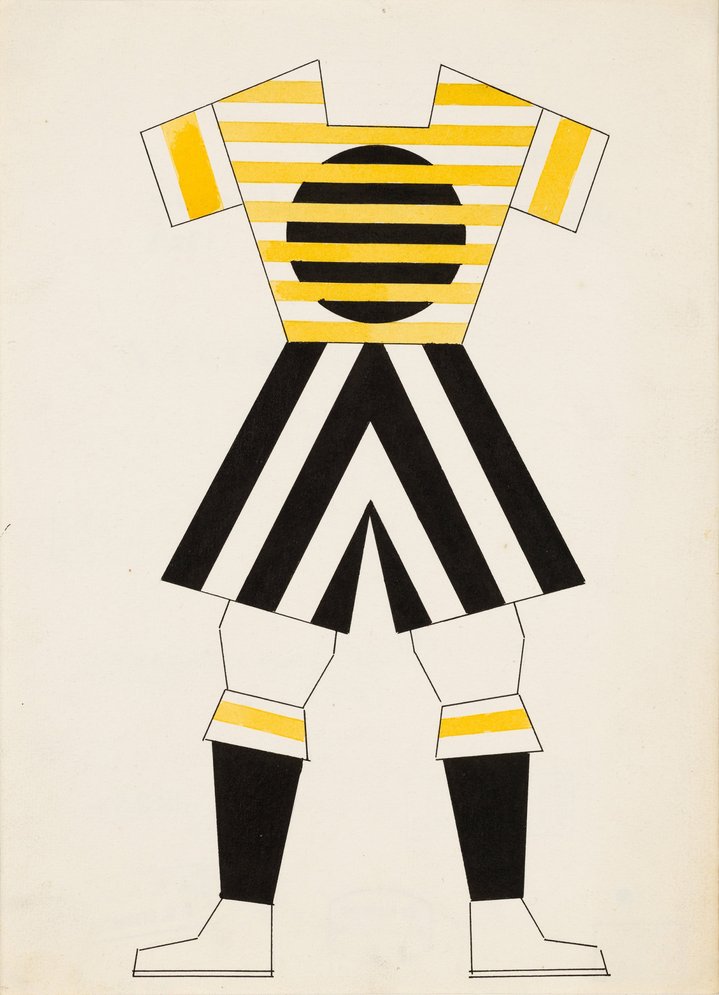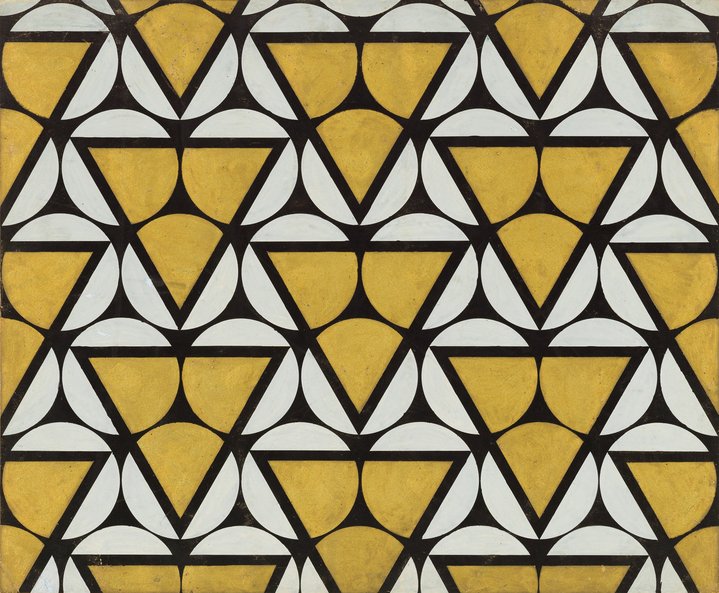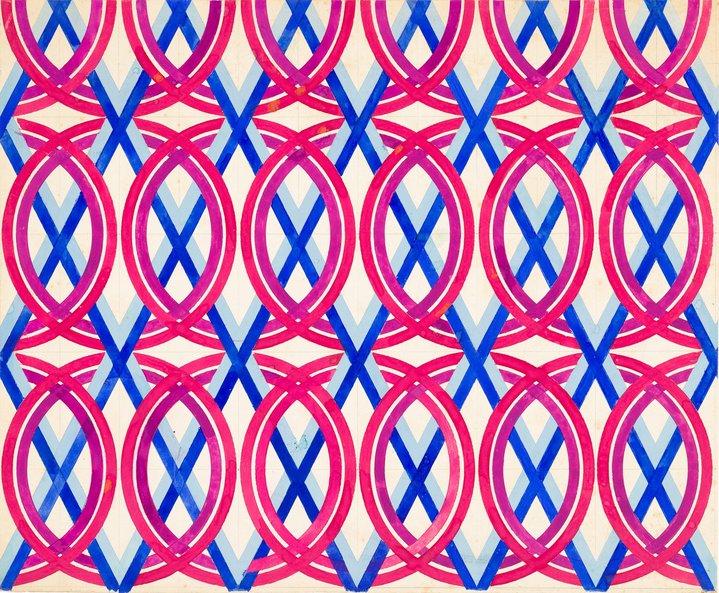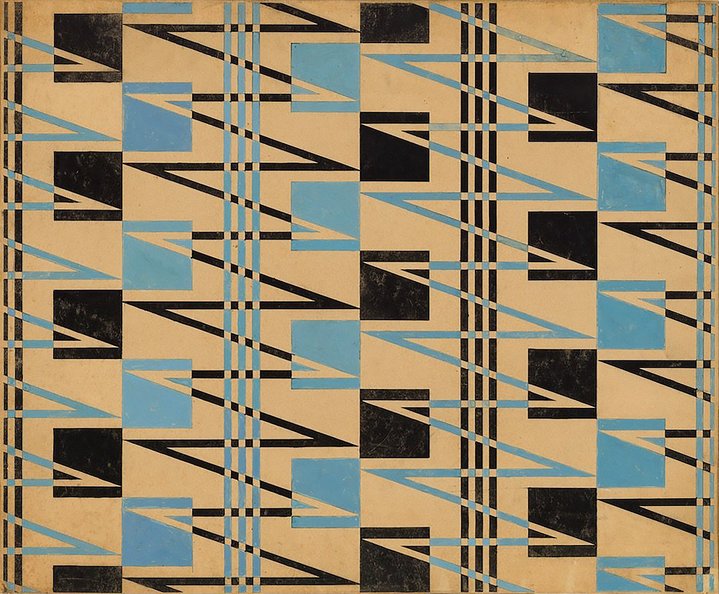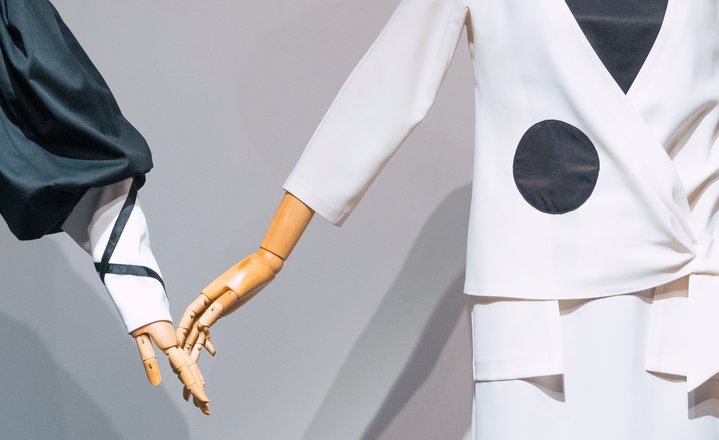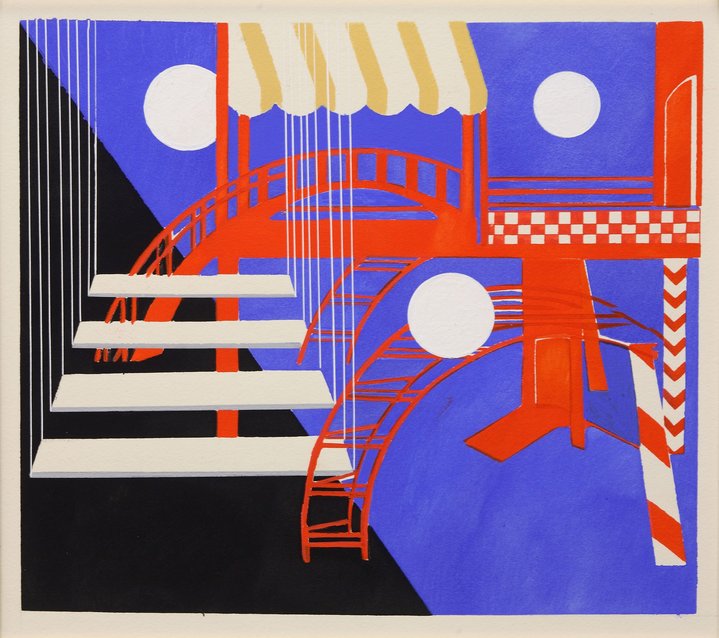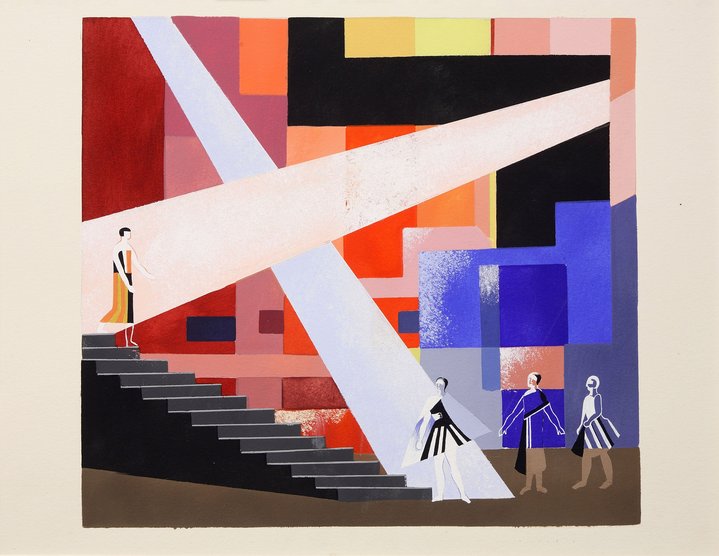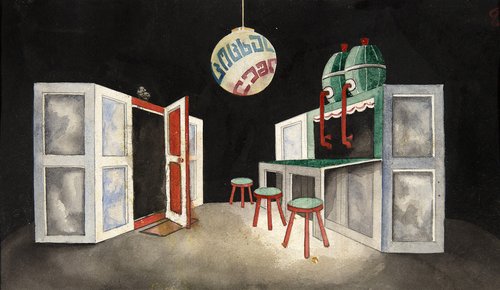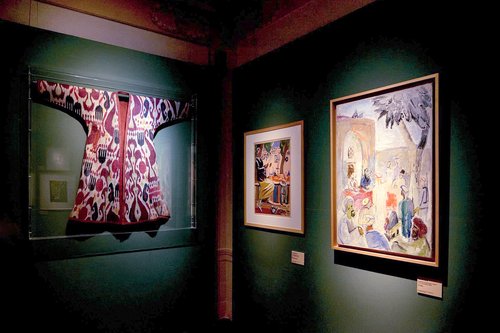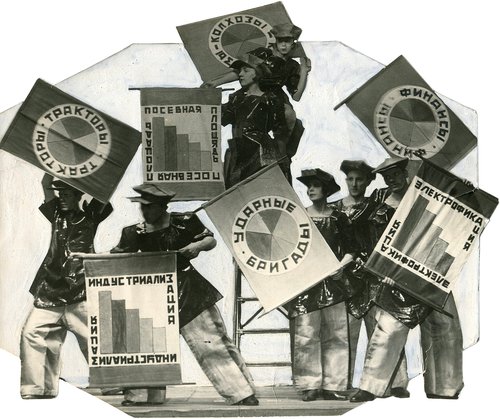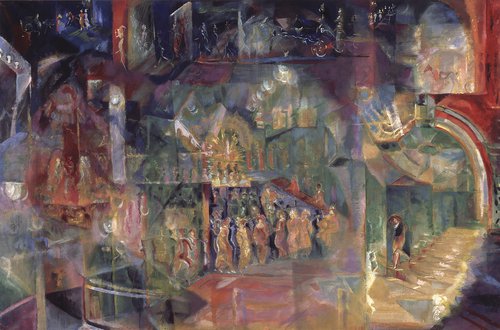Girlfriends. To the Anniversary of Varvara Stepanova. Exhibition view. Moscow, 2024. Courtesy of Pushkin State Museum of Fine Arts
Varvara Stepanova, the Phallic Woman
An exhibition currently showing at the Pushkin Museum of Fine Arts in Moscow called ‘Girlfriends’ celebrates female avant-garde artists, marking the 130th anniversary of the birth of pioneering constructivist designer Varvara Stepanova. The show highlights the artist’s pivotal role in constructivism, her collaborations with contemporaries, and the influence she had on subsequent generations of artists.
‘Girlfriends’, an exhibition dedicated to avant-garde female artists at the Pushkin Museum of Fine Arts in Moscow is curated by Alexandra Danilova, Alexander Lavrentiev and Alexei Savinov and marks the130th anniversary of the birth of Varvara Stepanova (1894–1958), flag-bearer of the aesthetics of proletarian constructivism, wife of Alexander Rodchenko (1891–1956), as well as collaborator and critic of Kazimir Malevich (1879–1935).
With much of the focus on female art of the era of great experimentation of 1910-1920s, the work on display by Varvara Stepanova attests to a persuasive and intimate dialogue with her left-minded colleagues, divided into three groups, the first representing the work of Stepanova’s female friends, Aleksandra Exter (1882–1949), Liubov Popova (1889–1924), and Olga Rozanova (1886–1918). Like Stepanova herself, they are considered leaders of the ‘Amazons of the Avant-Garde’, a title coined for them by the futurist poet Benedikt Livshits.
The second group on display includes contemporaries who distanced themselves from the radical avant-garde but were still influenced by it and became creators of some of the ideas that also fascinated Stepanova. Vera Mukhina (1889–1953), for example, emulated Stepanova in developing a new industrial design. Both taught at the VKhUTEMAS-VKhUTEIN art school. In the 1920s, Nadezhda Lamanova (1861–1941), a former fashion designer at the Russian Imperial House, began collaborating with Stepanova, Mukhina, and Exter in creating new proletarian fashion, transformer costumes, and stylish constructivist accessories. Esfir Shub (1894–1959), the film director, screenwriter, and pioneer of artistic montage in documentary film, collaborated with Stepanova, as they assembled new ‘montage books’ featuring photocollages. The final Stepanova work on display at the exhibition is the layout of Shub’s 1958 book ‘Close-up’.
Finally, the third group consists of young female artists, students of the ‘Amazons’ and their followers. Pupils of Stepanova and Rodchenko at VKhUTEMAS like Anastasia Akhtyrko (1900–1968), the sisters Olga (1886–1958) and Galina Chichagova (1891–1966), Lyudmila Sanina and others. Artists from the younger generation, among them the photographer Elizaveta Ignatovich (1903–1983), applied a constructivist approach when creating new books and posters. Works by Anastasia Akhtyrko create one of the strongest impressions in the entire exhibition. Her notebooks and diaries are prime examples of the school of modular form-making, the philosophy of graphic assembly on the plane with force lines and vectors.
The exhibition ‘Girlfriends’ offers a bold introduction to the spiralling interactions and relationships shared by Stepanova – who often used the male pseudonym Varst´ - and her friends, colleagues and students. The exhibition is divided into four parts: the art of the new book, scenography and cinema, textile design, photography and film editing. The themes are presented in a manner similar to that of a publishing or textile-making school workshop: tables with graphic sketches, samples of textiles with ornaments, a disassembled book on photomontage technique, mannequins dressed in fashionable techno-suits, uneven rows of paintings and sketches mounted on the walls. There are obvious failures in the logic and rhythm of just how the exhibition has been planned and organized, as though the Russian guru of exhibition design Evgeny Asse had worked his magic in one room but the next featured sketches by Moscow Art Institute quickly hung up by first year students in no particular order for an end of term show. Of course, this could be a deliberate attempt to force the viewer out of their comfort zone for the sake of evoking and enhancing the impression of the spirit of the avant-garde design laboratory.
However, the resultant confusion of rhythm and logic instead leads the viewer away from an instructive, phase-by-phase understanding of the creative processes in the 1910s and 1920s into a mainstream of cliches about the beauties of the display of avant-garde art and design. Presented as such, design, costumes, photomontage and balloon and triangle people are no different than any mundane exhibition about constructivism, whether it is in Murmansk, in New York, or in Singapore. It may be that when it comes to the exhibition ‘Girlfriends’, Varvara Stepanova is somehow left stuck inside a general flow rather than given her due as a seminal figure who gathers a field of ideas and meanings around her.
There is much to be said about this topic. After all, ‘Varst’ is both a leader and a fanatic of the new anti-easel art that fights against painting. Think back to the now legendary exhibition ‘The Amazons of the Avant-Garde’ that between 1999 and 2001 travelled around Berlin, London, Venice, Bilbao, New York and Moscow. That momentous show was dedicated to the frontwomen of modernism from 1910 to 1920s: Aleksandra Exter, Natalia Goncharova (1881–1962), Liubov Popova, Olga Rozanova, Nadezhda Udaltsova (1885–1961), and Varvara Stepanova. In one article in the current exhibition’s catalogue, researcher Olga Matich re-introduces the term ‘phallic woman’, which existed at the turn of the 19th and 20th centuries. Then it was used to characterize prevailing fashionable gender experiments and sexual anarchy. I think it appropriate to award Varvara Stepanova’s art with this term too.
The artist not only consistently implemented what men came up with. She was a theorist, a teacher, and an ideologue of many different processes. She was uncompromising in her judgement, especially when it involved compromises and the kind of old-fashioned paintings typically associated with passive, consumerist womanhood. ‘Varst’ fought such paintings tirelessly and with all her energy, as she did anything to do with compromises and selling out to consumers.
The first large hall in the Pushkin Museum exhibition is devoted to early works and designs made for futurist books, in juxtaposition with constructivist books by Stepanova and her students. Works for the milestone ‘5x5=25’ exhibition are also on display. This historical show marked the revolutionary transition from easel art to production art and featured five works by five artists devoted to this transitional theme: Alexander Vesnin (1883–1959), Rodchenko, Stepanova, Popova, and Exter.
For a more complex, differentiated understanding and comprehension of the history and the role Varvara Stepanova's personality played in avant-garde eart historical processes is needed. The fact is that futurism and production art should have been separated. As leading American academic and scholar of the Russian avant-garde John Bowlt notes, Stepanova made many discoveries about the combinations that link phonetic and semiotic systems while she was exploring visual futurist poetry. No mere illustrator of ‘abstruse poems’, she was a scholarly linguist who studied the keys of the communicative systems of non-mimetic, nonverbal poetry. She was an explorer, an inventor of this world of words at large.
The section devoted to ‘Constructivism and Industrial Art’ is built on a completely different foundation. By no means is it a simple chronological continuation of the Futurist section. The ethics of industrial design are opposite to the sensual, wild, irrational world of barbaric futurism and abstruse poetry. In the section on Constructivism it is impossible to ignore the binary aspects of the Stepanova-Rodchenko tandem. Rodchenko was both mentor and teacher, and also a dominant figure in ‘Varst’s’ creative practice. However, her energy and strength of creative will, contributed to a more radical ´dehumanization´ of the aesthetics of the machine world. Unlike Rodchenko, Stepanova ruthlessly parts with easel painting and pictorialism. She turns to deliberately marginal media: textile design, scenography, the design of books for mass circulation. She struggles to eradicate any contradictions between the prose of life and high art. On this path, Stepanova, like other Amazons, faces many insoluble contradictions, aporias. One of them has become highly topical today: that the fetish of new technologies will eventually cancel the participation of the human creator altogether. This is likely to happen first in the sphere of applied design. However, this suggests another exhibition, one on the theme of constructivism and contemporary art, a subject even more polemical.
Girlfriends. To the Anniversary of Varvara Stepanova
Pushkin State Museum of Fine Arts
Moscow, Russia
July 23 – October 20






